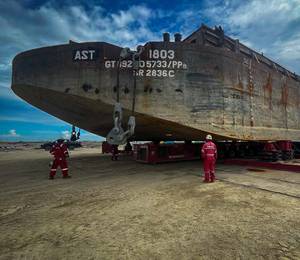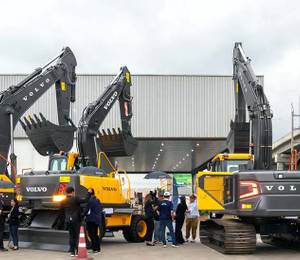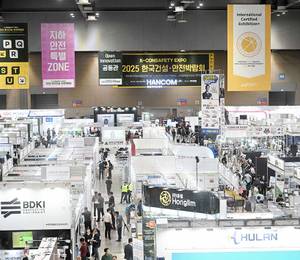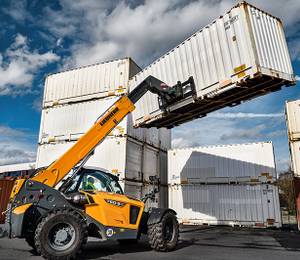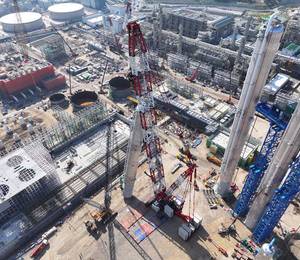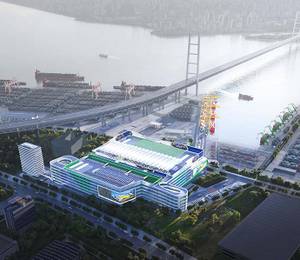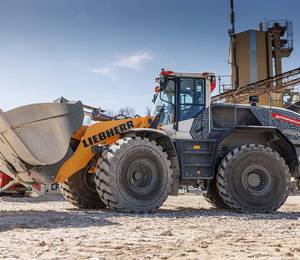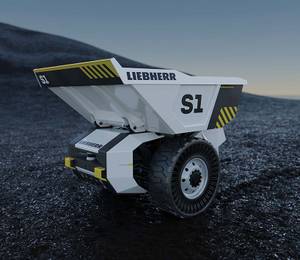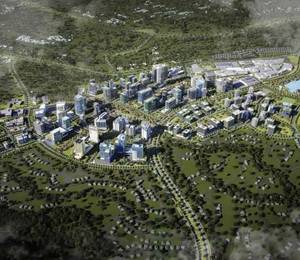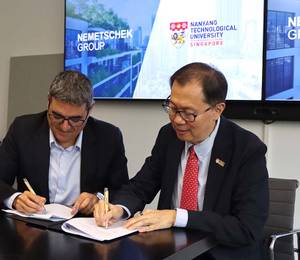With its recent acquisition of Malaysia-based MFE Formwork Technology, Doka has solidified its presence across Asia. SEAC met up with Robert Hauser, CEO of Doka and Pat Gorham, executive vice president for Doka Asia Pacific to find out more about the company’s plans in the region, latest innovations, and future strategy in navigating global challenges.
1). Doka has been active in Asia for many years, taking part in various projects. How important is the region for the company’s long-term growth?
Robert Hauser (RH): Asia is a very important market for Doka. I would say there are four building blocks. First of all, there’s the regional scale. When you compare the construction output of the different regions worldwide, Asia is the biggest region and also the fastest growing. Especially in places such as India, with its tremendous growth, we have been involved in major projects like the Mumbai-Pune Expressway’s Missing Link Project and the Dwarka Bridge.
The second one is the socio-economic transition. What we see in Asia is a growing middle class, and this generates huge demand in terms of transportation, in terms of living, in terms of energy infrastructure, and also in terms of urbanisation.
Third, it’s the tech integration. Asia is a rising adopter of new technologies, whether it’s BIM, modular building, or applied robotics at the jobsite. We have early adopters in Asia – and this is why, also in terms of our innovation, Asia is an important hub for us.
Last but not least, product diversification. We now have a broad spectrum of products ideally suited to the Asian market. In addition to our existing Doka products, we also offer the MFE products and thereby, we have a full suite of solutions that the customers demand for in the Asian market.
Pat Gorham (PG): In line with our international growth strategy, Doka has been actively working to strengthen its presence in Asia. With the acquisition of MFE, Doka has become a major player in the region and we need to further strengthen this business and partnerships with our customers and to grow the business further in Asia.
Doka offers a one-stop shop solution for any project. Especially now that we see rapid urbanisation and industrialisation happening in Asia, our new digital solutions launched at bauma will be of huge benefit to our customers and to run their projects in a far more efficient way.
2). As demand for infrastructure is rising across Asia due to rapid urbanisation, is there a plan for Doka to expand further in the region?
PG: Yes, I think there is a plan to expand further in the region. At the moment, Doka’s products are available throughout the entire region, even in markets where we don’t have physical presence with branches; we have an expert team that looks after those markets.
We have strengthened our regional one-stop-shop solution by localising some manufacturing operations. Over the past couple of years, we’ve been developing the DokaFit line, which includes the DokaFit Prop and DokaFit Handset. They can be used in a wide range of projects, and cater to different types of budget requirements
Starting with the DokaFit Handset and Prop, this product line is designed to address the immediate challenges of the Asian construction market. We believe it will be used very well in India, Malaysia, Philippines and Indonesia – our main markets.
Here in Asia, we need to deliver our products in a speedy fashion, and this is where localisation of the products becomes important. We will have them fabricated in Asia, and we also look at the product fit and design products specifically for the region. Having them manufactured in the region will allow us to be more cost-effective because we reduce shipping times and shipping costs as well.
3). Speaking of product localisation, is Doka also looking into manufacturing MFE formwork systems in other markets outside Malaysia to be closer to your global customers?
PG: Yes, it’s something that we always look at to see where else could we manufacture. And India being 60% of our business with the growth that we currently see in the whole Asian market for the monolithic requirements, we believe that expansion into another country is going to happen in the next one to two years.
4). Asia’s construction landscape has changed so much over the last few years, especially since the pandemic. What do you see as the main challenge(s) in this region?
PG: What we see now is that, projects are finding there’s a shortage of labour in the market, so we need to have more efficient systems in place. Our new digital customer platform, Doka 360, is a great example of how we are digitalising the formwork process. Our customers get the benefit from a more efficient system, better utilisation of their stocks and gain full transparency and control from planning to return delivery.
We also see the one-stop-shop solution as a big benefit to our business in Asia. Our customers know that whatever project they’re doing, whatever budget they have, whatever formwork or scaffolding that is required, we have the solution for them now.
5). The Doka 360 digital platform was unveiled earlier at bauma, revolutionising the formwork process. Can you tell us a little bit about this initiative and how it will change the industry?
RH: When you look at our industry today, one of the most pressing problems is that productivity hasn’t really increased over the recent decades. We’re still at the level where we were 10 or 20 years ago. That’s why we’ve been working hard to increase productivity for our customers, to ensure that their projects are economically viable. And Doka 360 plays an inherent part here.
With Doka 360, we’ve built a digital platform where customers can interact with us. Traditionally, our interaction wasn’t necessarily the most efficient and productive way – via phone, via email, there was a lot of back and forth. Now, customers can interact with us and complete their formwork process solely by using Doka 360 digital platform. For example, during the design phase, customers can access our design tools to help with their planning. Once finished, they can generate a material list and start an order.
They can track the delivery status of their order in real-time – they will know when the truck is arriving at the jobsite, they can track the material at the jobsite, and they can check the status of their invoices.
That’s what Doka 360 is all about – to make the entire formwork process much more efficient for our customers and thereby increase their work productivity.
6). Sustainability is also a key focus for Doka. One of the company’s latest innovations in this area is the intelligent heated formwork. How does the method work, and when is it ready for commercial launch?
RH: The construction industry is responsible for almost 40% of the global carbon footprint, with concrete being a major contributor. To help lower this carbon footprint, we have developed the intelligent heated formwork – it’s a formwork panel that you can heat up.
Nowadays, there are alternative concrete mixes with lower carbon emissions available on the market. However, these low-carbon concrete options tend to have difficult physical features, including the speed at which they cure (how fast they can harden). Normally the process occurs at a much slower pace, in particular when the temperatures are around 10 to 15 °C depending on the concrete mixture. This is where our intelligent heated formwork comes in handy.
By initiating or adding a little bit of heat, we can accelerate the speed of the curing process. Plus, with our sensor solutions that measure the temperature of the concrete, we can even control the process, since we know exactly how much heat we need to inject in order to optimally steer the hardening and the curing of the concrete.
We have tested this product on various jobsites in Austria, Norway, Sweden and Czech Republic. We’re planning to initiate the go-to-market in Scandinavia in 2026, and afterwards the rest of Europe will follow.
7). With the economic uncertainty in North America, do you expect this situation will have a significant impact on Doka’s efforts to meet its climate targets?
RH: Sustainability is a central pillar of our corporate strategy, and we have set ourselves the goal of becoming net zero by 2040. This will be achieved by introducing measures within both our company and our supply chain.
For us, sustainability and business success go hand in hand. We aim to offer solutions to our customers that are not only sustainable but also economically viable.
Given that sustainability is a long-term strategy, we don’t think such short term developments will have a major impact. We will stick to the course to reduce our carbon emissions. We may face some difficulties in the North American market, but we will follow through on our long-term strategy.
We also believe the trend towards sustainability will continue and become stronger, as authorities and governments need to introduce additional measures in order to get carbon emissions under control and encourage all the stakeholders, also in our industry, to work on systematically reducing carbon emissions.
8). Moving forward, how will Doka stay ahead of the curve while facing global complexities and greater competition than ever before?
RH: There are two ways on how we’re going to achieve that. First, by staying close to our customers, which is key, because we have to understand their needs. We have to know where their pain points are and what the realities on site are. Then we will incorporate this vital information into our product development, so that we can offer suitable products and solutions to our customers and provide them with value add.
All images: Doka
Note: This story has also been published in the May/Jun 2025 issue of SEAC (with more images). Click here to read online or here to download the PDF file (pages 38-40).
